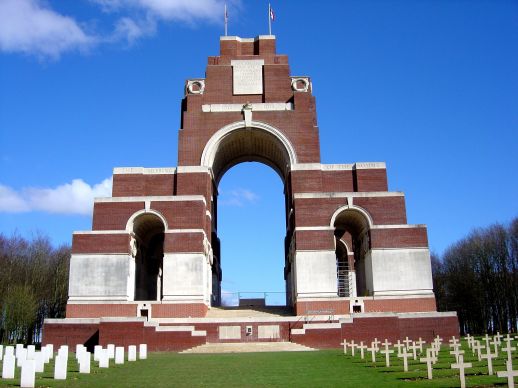Richard Moody Bailiff
Date of birth: 1895
Date of death: 19.8.1916
Area: Brotherton
Regiment: King's Own Yorkshire Light Infantry
Family information: Son of John Bailiff
Rank: Lance Corporal
Service number: 23187
War Service
Richard Bailiff was in the 6th battalion of the King’s Own Yorkshire Light Infantry . This was a service battalion meaning it was a volunteer battalion formed for the duration of the hostilities. Formed at Pontefract on 12 August 1914 as part of K1 (Kitchener’s 1st Army) and attached to43rd Brigade in 14th Light Division.
They moved initially to Woking and on to Witley in November 1914. then to Aldershot in February 1915. On 21st May 1915 they landed at Boulogne but deployment to the front was delayed because of lack of ammunition. The 14th (Light) Division served on the Western Front throughout the war.
They finally arrived at the front around the 17th June and took part in the following engagements:
1915
The Action of Hooge, in which the Division had the misfortune to be the first to be attacked by flamethrower. The Second Attack on Bellewaarde.
1916
· The Battle of Delville Wood.
· The Battle of Flers-Courcelette.
On 1 July 1916, supported by a French attack to the south, thirteen divisions of Commonwealth forces launched an offensive on a line from north of Gommecourt to Maricourt. Despite a preliminary bombardment lasting seven days, the German defences were barely touched and the attack met unexpectedly fierce resistance. Losses were catastrophic and with only minimal advances on the southern flank, the initial attack was a failure. In the following weeks, huge resources of manpower and equipment were deployed in an attempt to exploit the modest successes of the first day. However, the German Army resisted tenaciously and repeated attacks and counter attacks meant a major battle for every village, copse and farmhouse gained.
Richard Bailiff was killed in the Battle of Delville Wood and is remembered at the Thiepval memorial. Delville Wood was sometimes known as Devil's Wood, and the fighting there during the battle of the Somme was particularly ferocious.
At the end of September, Thiepval was finally captured. The village had been an original objective of 1st July. Attacks north and east continued throughout October and into November in increasingly difficult weather conditions. The Battle of the Somme finally ended on 18 November with the onset of winter.
The Thiepval Memorial, the Memorial to the Missing of the Somme, bears the names of more than 72,000 officers and men of the United Kingdom and South African forces who died in the Somme sector before 20 March 1918 and have no known grave. Over 90% of those commemorated died between July and November 1916. Richard Bailiff was one of those men with no known grave.
The Brotherton website suggests that Richard had formerly been a member of the 2nd Dragoons (No. 15157). However, the medal rolls index does not show any record of this.
In addition to Richard, four of his brothers also served in the Army during the war. These were John Kelly, James Henry, Robert Victor and Thomas Alexander.
Family Life
Richard Moody Bailiff was born in 1895 in the Brotherton parish but more specifically in Poole, Burton Salmon.
In 1901 his father John was a ‘Forester/Woodman’ who had been born in Gatehouse in Scotland whilst his mother Helen was born in Glenluce, Galloway. There were six children.
By 1911 both James (aged 20) and Richard (16) were working with their father as under foresters for, one must assume, the Byram Estate and so would probably have come under the direction of Hugh Aldersey at some point prior to the war.
Also living in the house with the Bailiff’s was Charlotte Clerk, John’s sister-in-law and a Lilly Swann from Stanley who was a domestic servant - probably for the estate.
 Thiepval Memorial
Thiepval Memorial

